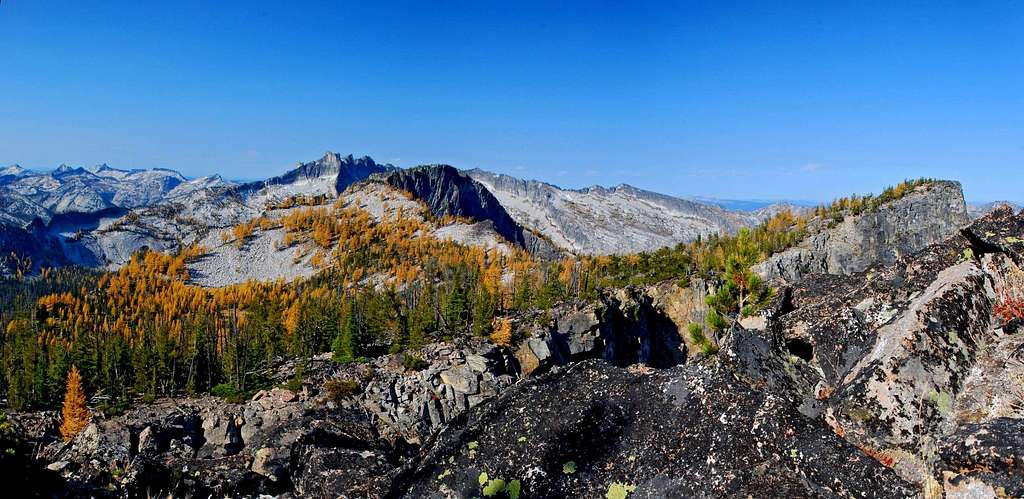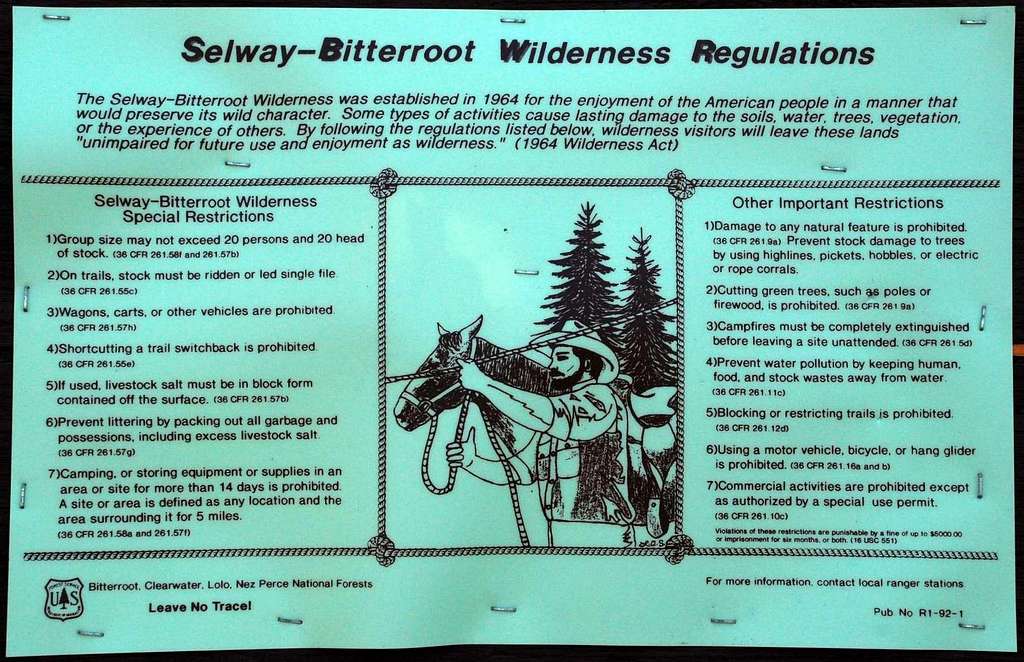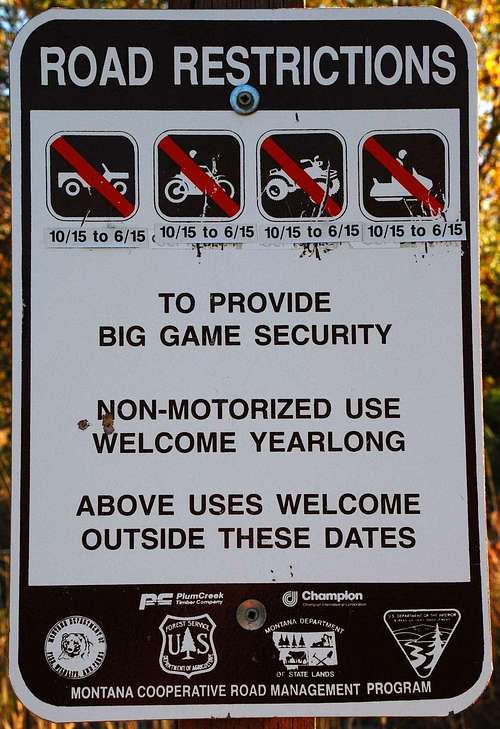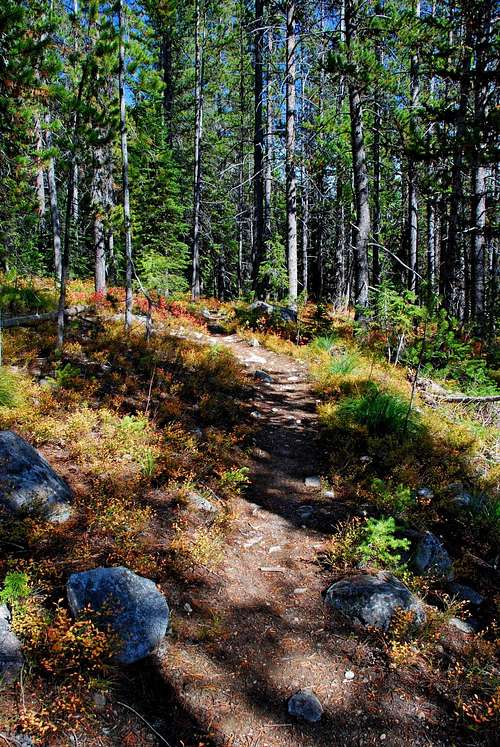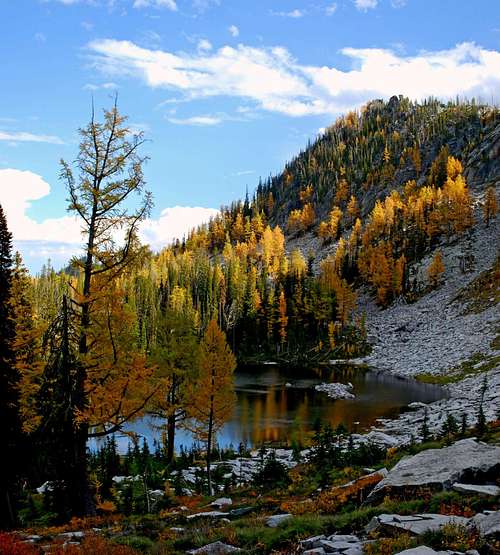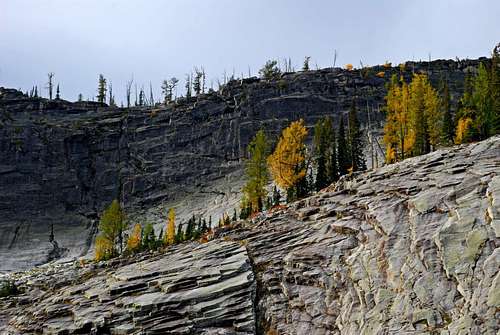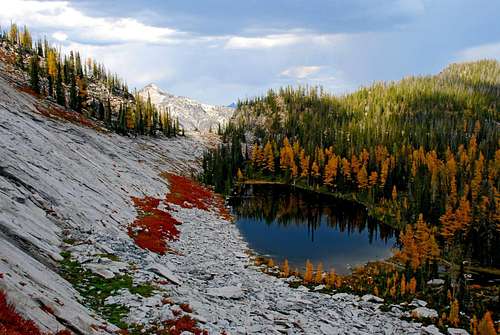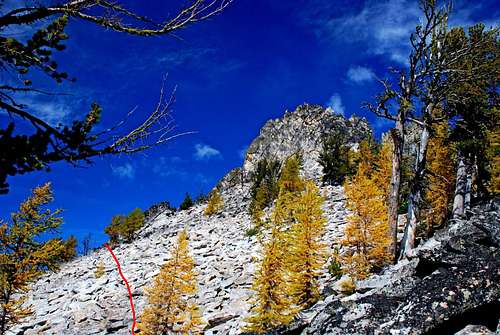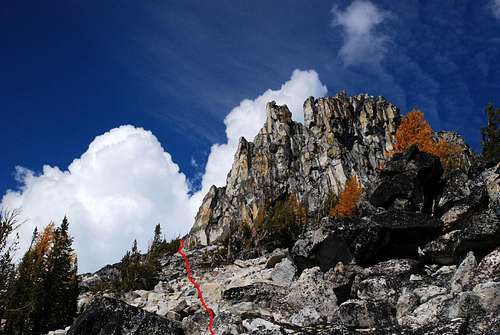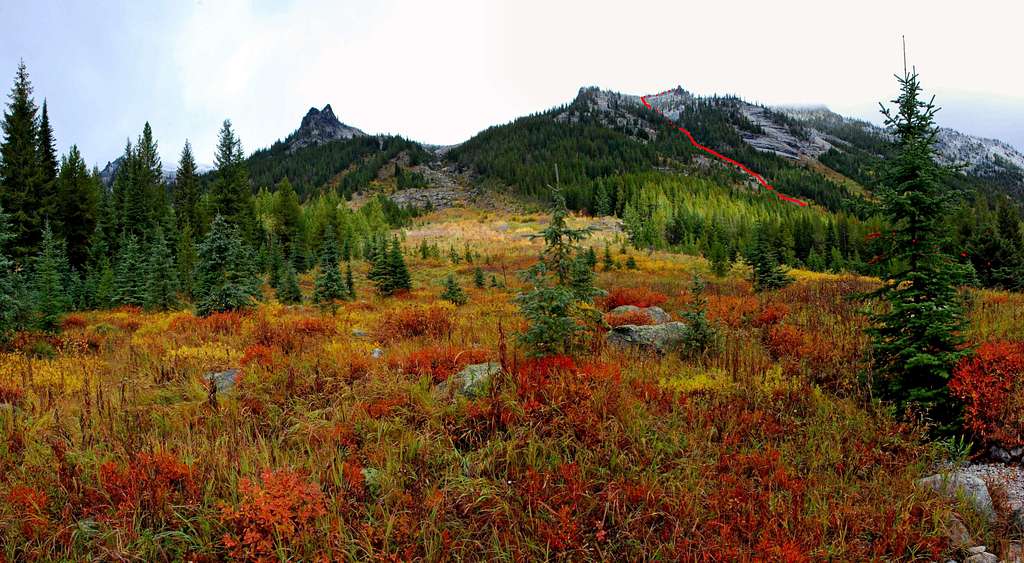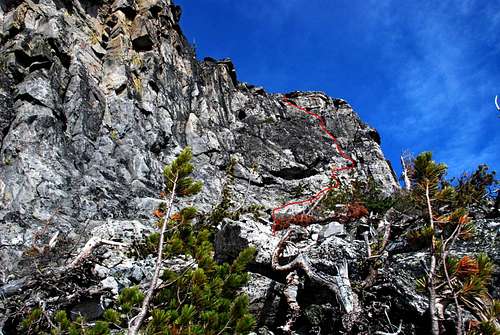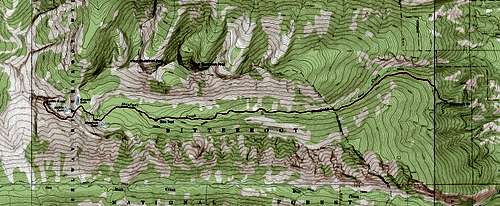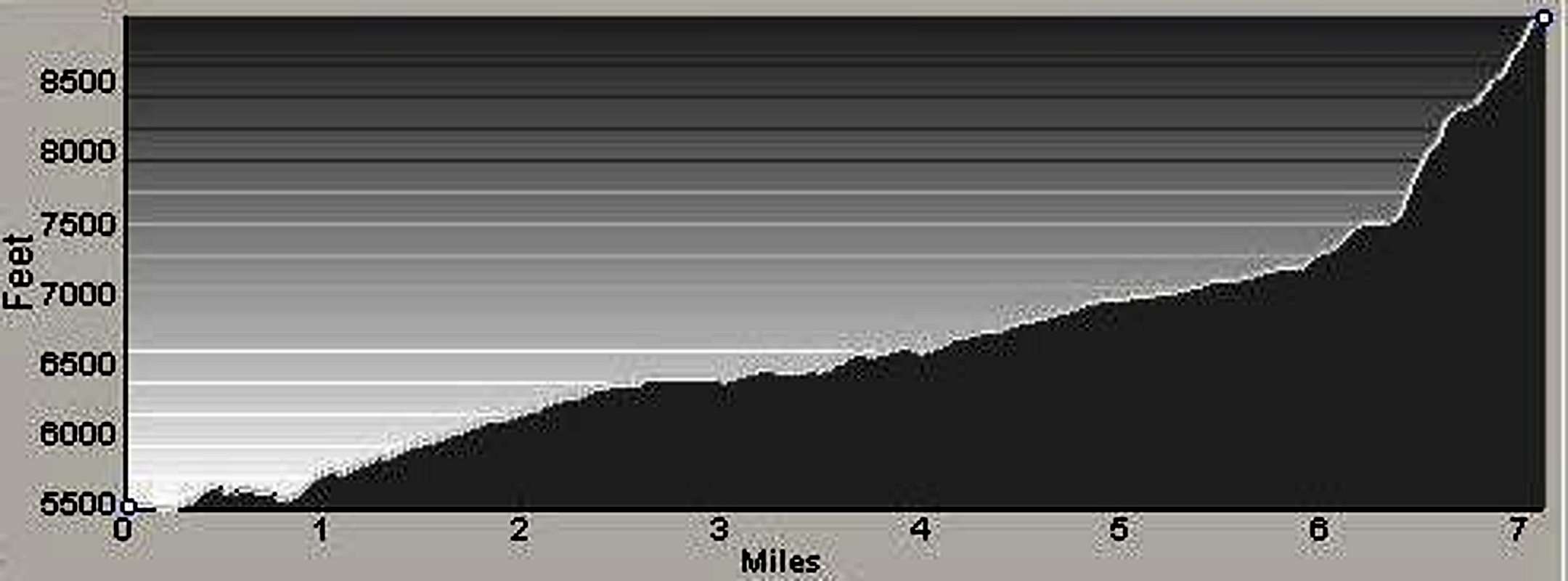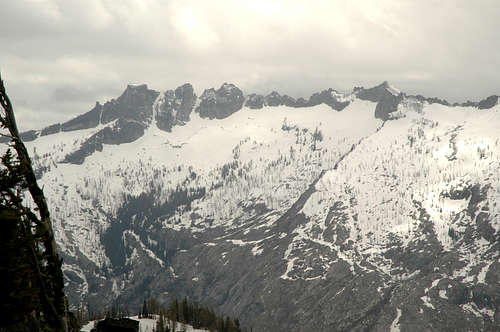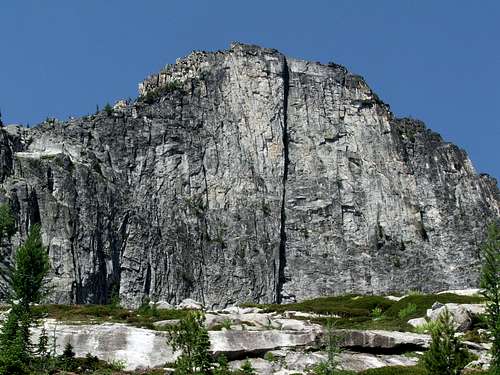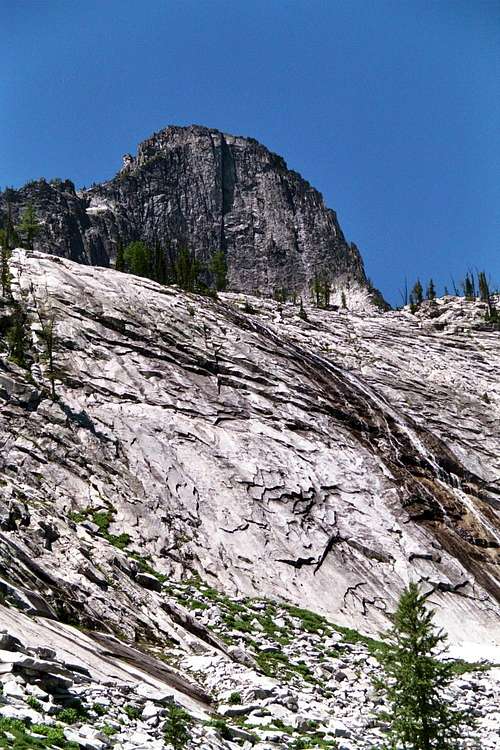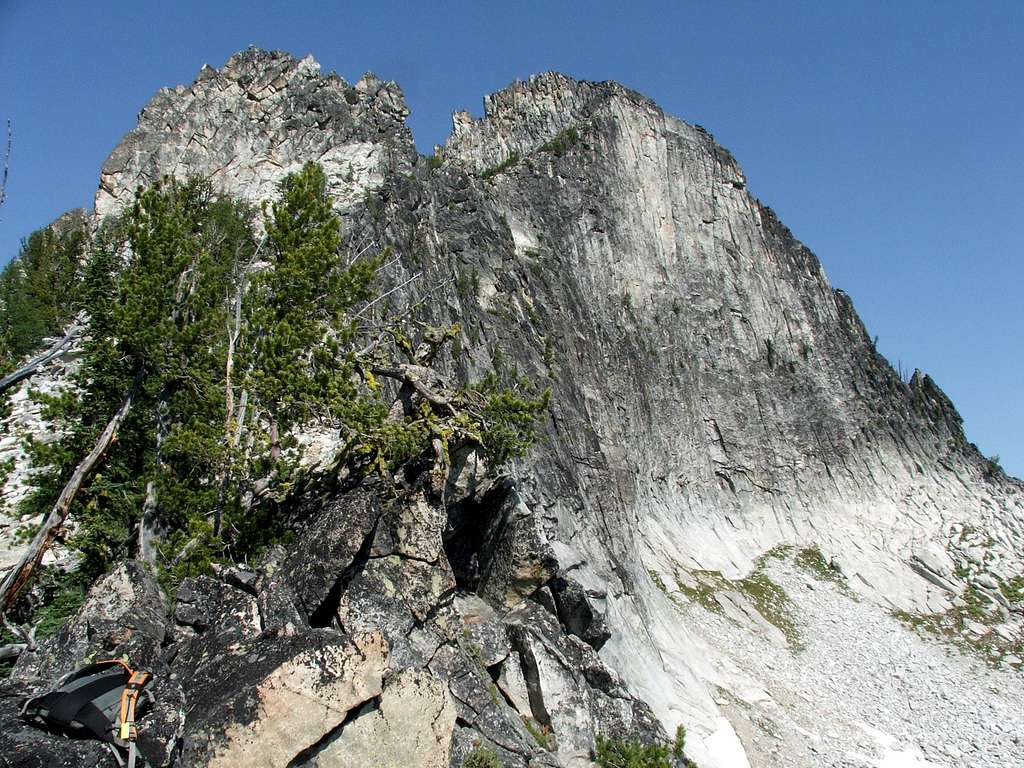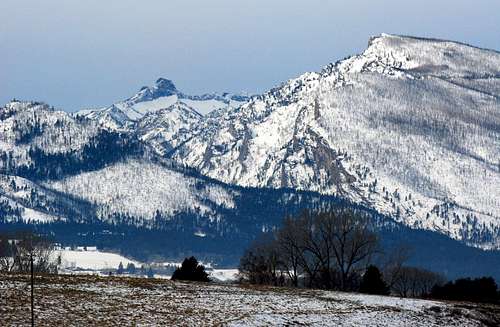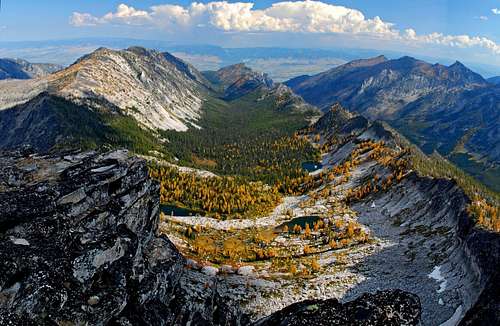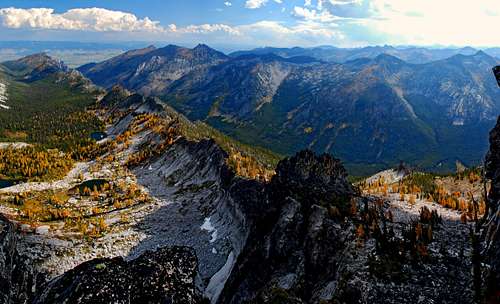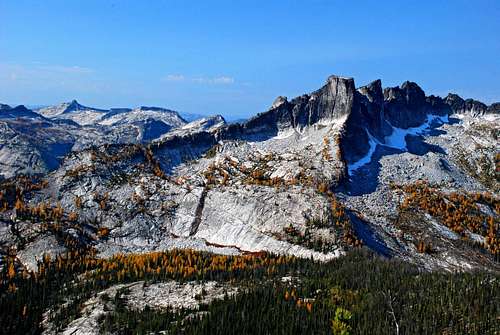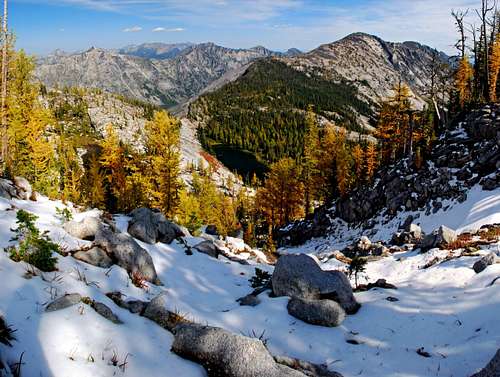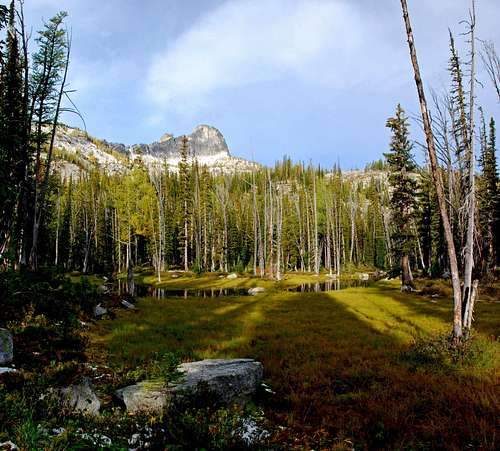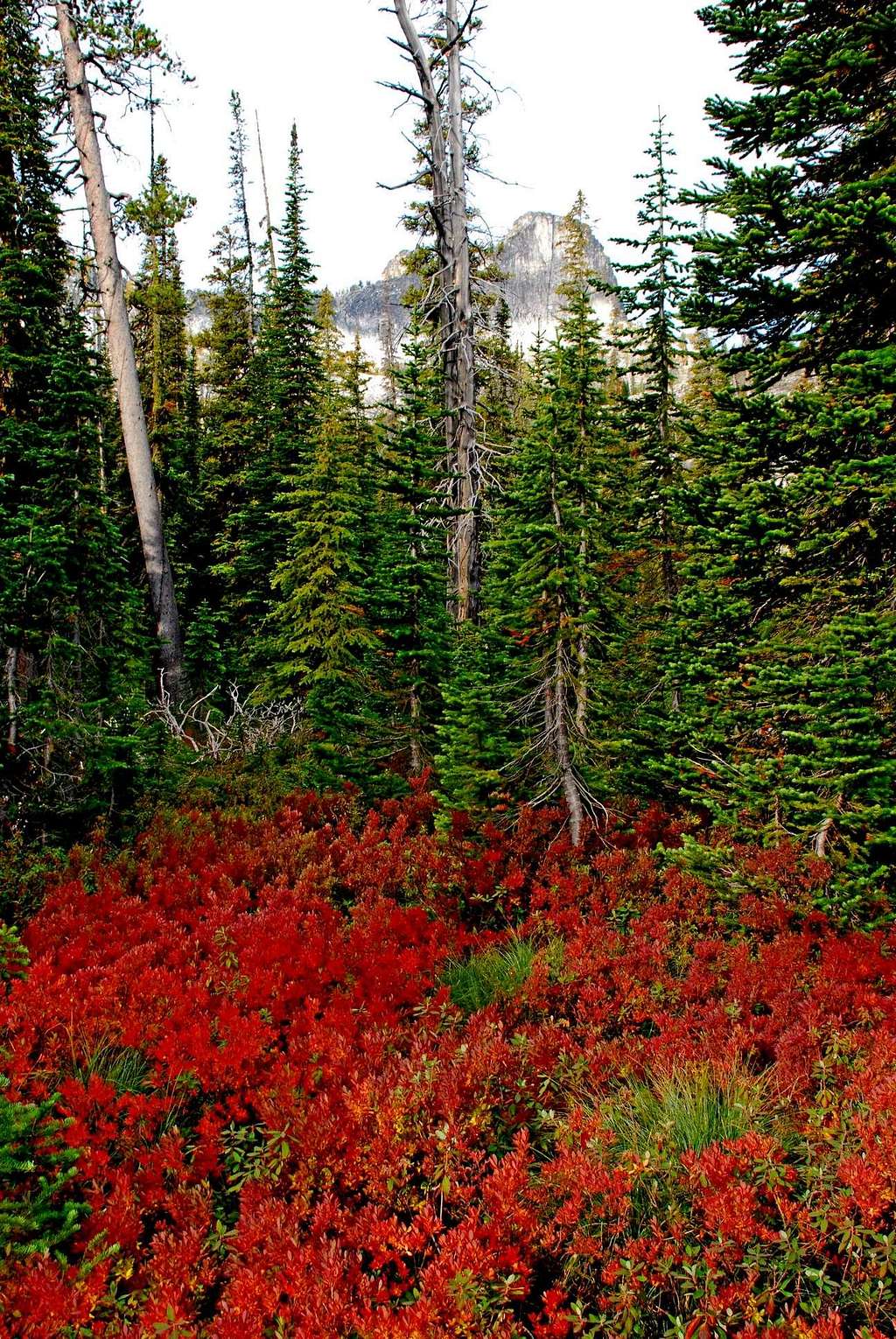-
 30015 Hits
30015 Hits
-
 95.51% Score
95.51% Score
-
 53 Votes
53 Votes
|
|
Mountain/Rock |
|---|---|
|
|
46.33072°N / 114.37165°W |
|
|
Ravalli |
|
|
Mountaineering, Scrambling |
|
|
Spring, Summer, Fall |
|
|
8984 ft / 2738 m |
|
|
OverviewLatitude & Longitude – 46.33072 N / 114.37165 W Route Type – Scramble Elevation – 8,984’ Class Levels – Class 2+ to 5.4 Length of Time Required To Complete Route – One Day
Frequented mostly by hardy backpackers (who camp at Knaack Lake), climbers of Castle Crag and, in the fall, hunters on horseback (looking for elusive deer and elk), Sheafman Canyon is a wonderful place to experience the wilderness in seclusion. This canyon is home to a small pack of wolves who may considerably intensify your wilderness experience, should you be fortunate enough to hear them howl, or better yet, see them. So far I’ve only been lucky enough to see their footprints and scat. The feature of Castle Crag which makes it so recognizable, even from afar, is its 500+ foot vertical and sheer east face. This face has an obvious vertical crack right up the middle. I know several technical climbers who "talk" about attempting that crack, but so far have spoken to no one who has tried. Maybe you’ll be the first! I enthusiastically recommend this seldom-visited peak. Offering stupendous views of the surrounding summits in addition to Sheafman, Mill, and Fred Burr Canyons, it provides one of the best "Bitterroot Climbs." Getting ThereFrom Hwy 93 about 5 miles north of Hamilton, turn west at the Woodside Crossing (marked by a stop light) onto Dutch Hill Road. In about 2.5 miles you will reach a T intersection. Turn right (north) onto Bowman Road and follow it as it completes two 90 degree turns (left then right – west then north). In 1.2 miles turn left (west) onto the gravel West Cow Creek Road. Staying on the main road, drive an additional 5 miles to the trailhead, which is marked (right side of the road) with a Forest Service sign. Parking is available for several vehicles along both sides of the road. Area Restrictions (Red tape)Just over two miles from the trailhead you pass into an official wilderness area, The Selway-Bitterroot. All wilderness rules and regulations apply.Additionally, the road to the trailhead is gated between October 15th and June 15th to provide a "partial" winter sanctuary for big game animals. What that means is, at least they won’t be bothered by motorized vehicles; however hunters on foot and on horseback still have access during hunting season. I’m guessing the elk, deer, and goats must be pretty good at staying hidden in this canyon, because I’ve seen little evidence of stock animals in Sheafman Canyon. CampingAbout a half mile from the trailhead there is a much-visited overlook area where some camp, especially if they want an overnight with their small children. But as far as camping goes, it’s not much.Most people who camp in the Sheafman drainage set up in the fairly level grassy area just east of Knaack Lake. This is a much better spot for climbers to spend a night or two in the canyon. The Routes
Note: I don’t recommend using this route during the spring runoff unless you want to get very wet. There are no "dry" ways to cross the creek after you pass the bridge at the first crossing. But, if you visit while there is still plenty of snow on the ground, it’s possible to forget about crossing back and forth across the creek and simply ski or snowshoe along the north side of the creek (after crossing the bridge). Because the throat of the canyon is quite wide, this does not require side-hilling, plus most of the deadfall and underbrush which would normally slow progress is safely buried under the snow. From the trailhead, follow the trail as it traverses northwest across the end of a ridge. As the trail curves west then southwest around the ridge, it loses a bit of elevation before beginning to ascend at a fairly consistent rate. At a point slightly more than 2 miles from the trailhead – a point which also happens to be the wilderness boundary – the trail crosses to the north side of Sheafman Creek on a nice little bridge built by a local Boy Scout Troop. Stay on the trail, now meandering in a mostly westerly direction where, after passing the 4 mile mark, it crosses back and forth over Sheafman Creek several times. About 5.5 miles from the trailhead, the trail turns toward the southwest. Just before reaching the 5 mile mark, the trail passes along the north side of Sheafman Lake, a beautiful little mountain tarn formed over the base of a talus field. From the lake, follow the cairn-marked trail west then northwest to the meadow on the east side of Knaack Lake. This meadow of grass and open woods is by far the best place to camp in Sheafman Canyon. Climbers’ Route – Knaack Lake to the Summit From the meadow at the south end of Knaack Lake, head to the base of the obvious talus-strewn gully which climbs from the southwest corner of the lake southwest toward the rim of Castle Crag’s southeast ridge. Climb the mixture of talus, Beargrass, and other mixed vegetation and flowering plants. As you pass 7,900’, the gully turns sharply to the right (west) and contours over a small grassy area while climbing another 100 feet. The gully then climbs more steeply to the south-southwest – now over a bit of scree – until it reaches a small notch (weakness) on the crest of the ridge (46.23722 N / 114.36516 W – 8,200’). From the notch, turn northwest and meander close to the ridge-crest, avoiding obstacles where possible. Because the northeast side of this ridge drops precariously, you will most likely find yourself traversing along the southwest side of the ridge, though most of the time not more than a few yards from the crest. As you work your way upward along the ridge, you will see a large rock fin (right around 8,600’) blocking the crest and the top section of the ridge along the southwest side (your left). Change your direction of travel so that you will skirt this fin at its low end (southwest). After passing the fin begin working more toward the ridge-crest (your right) as you continue traversing over talus and boulders toward the summit. Ahead you will see the summit block and the granite fin which rises from the left (southwest) like a buttress to meet it. Head for the bottom left (southwest) end of the "summit" fin. Once around the summit fin, pick any line of your choice up to the ridge-crest. The more gradual approach is on the left; however the steeper paths on the right dump you on the ridge-crest closer to the summit. It turns out either way is fine, because the ridge-crest has a nice little flat top a few yards wide. So no matter where you top out, it’s only an easy hike to the summit of Castle Crag where you will be greeted by some of the most astounding views available in the Bitterroots. Descend by reversing your route of ascent. Alternate Routes Ben Johnson used a cave/chimney southwest and above Aichele Lake to gain access to the southeast ridge of Castle Crag. He described its location as being below the right-most (northwest) low spot of the two along the ridge-crest. It is also possible to climb to the summit from the Mill Creek Trail by following an avalanche chute which reaches all the way to the ridge-crest just west of the summit. Including the approach, this is a very long route which includes a fairly tedious climb of over 3,250' in less than 1.5 miles - not recommended for anyone but the "stamina gods." When To GoEssential GearDuring the normal climbing season only sturdy footwear and weather-appropriate clothing are required for the routes to the summit of Castle Crag.For an ascent on snow, either snowshoes or skis will be required to reach Knaack Lake. From there, crampons and an ice axe are a necessity for climbing to the ridge and, in most cases, all the way to the summit. Route StatisticsAdditional Pictures |



